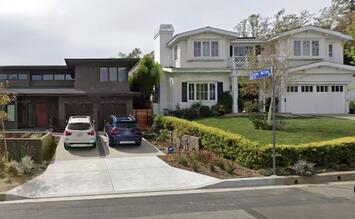
Los Angeles city and regional planners are just as responsible for the Palisades, Eaton, and other fires that have burned in the past few days as if they had poured gasoline on the homes and lit the matches. The destruction of these homes, including, for what it is worth, homes owned by Jeff Bridges, Billy Crystal, and Paris Hilton, among other celebrities, is a direct result of so-called “smart-growth” policies that call for establishing greenbelts around cities and packing people in high-density housing within those cities.
Pacific Palisades is on the edge of the Santa Monica Mountains, most of which have been locked up from development in various regional parks, including 72,000 acres protected by the Santa Monica Conservancy, 157,700 acres in the Santa Monica National Recreation Area, and various smaller parks. These have severely limited the amount of land available for housing and other developments, driving up housing prices.
Although homes in Pacific Palisades sell for millions of dollars, the lots are small, generally between 5,000 and 7,500 square feet. Many of the larger lots are long and narrow, so the lot widths are often only about 50 feet. This means that homes tend to be built no more than about 20 feet apart and sometimes as little as 10 feet apart.
One of the standards for building fire-resistant communities is that homes and other structures should be at least 50 and preferably 100 feet apart from one another, meaning homes should be built on around 1-acre lots. The two multi-million-dollar homes above are not only too close to one another, one of the homeowners has planted a tree and other tall vegetation between them. Unless the home on the right is built entirely of steel and concrete, once the home on the left catches fire, the radiant heat from that fire would be certain to ignite its neighbor. These homes were two lots away from parklands, so it is likely that they have burned to the ground. This is the same situation found in Colorado’s Marshall Fire as well as fires on the edge of Santa Rose and other California cities.
It’s not like this should surprise anyone in Pacific Palisades. The hills of southern California are some of the most fire-prone landscapes in North America. The first modern development in Pacific Palisades was Inceville, a movie studio that opened in 1911, which was mostly burned by a fire in 1916, and finished off by another fire in 1922.
There have been plenty of fires since then. The most recent was a 2018 fire that burned 97,000 acres and more than 1,600 structures, killing three people and forcing the evacuation of nearly 300,000. Despite these experiences, Los Angeles urban planners remain more intent on their dreams of compact development than on fireproofing their city.
Read the rest of this piece at The Antiplanner.
Randal O'Toole, the Antiplanner, is a policy analyst with nearly 50 years of experience reviewing transportation and land-use plans and the author of The Best-Laid Plans: How Government Planning Harms Your Quality of Life, Your Pocketbook, and Your Future.
Photo: Google Streetview, via the Antiplanner.












